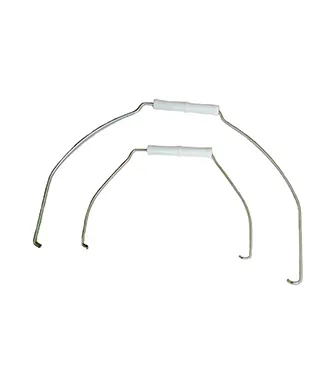-
 Phone:
Phone: -
 Email:
Email:

baling wire gauge
Understanding Baling Wire Gauge A Key Consideration in Agriculture and Recycling
Baling wire gauge is an essential factor in both agricultural practices and recycling operations. It refers to the diameter of the wire used in the baling process, which involves compressing and binding materials such as hay, straw, or recyclable goods into manageable bales. The choice of baling wire gauge significantly affects the strength, durability, and efficiency of the baling operations.
The Importance of Baling Wire
Baling wire serves multiple purposes it securely binds bales, facilitates handling and transport, and maintains the integrity of the materials being baled. In agriculture, baled hay and straw are crucial for feeding livestock during winter months when fresh pasture is unavailable. In recycling, baling helps to manage waste efficiently, ensuring that materials are compacted and easy to transport to processing facilities.
Choosing the appropriate gauge of baling wire is vital. It must be strong enough to hold the materials tightly without breaking, yet flexible enough to allow for easy use during the baling process. Baling wire is typically measured in gauges, with a lower gauge number indicating a thicker wire. Common gauges for baling wire range from 12 to 14, with the specific gauge selected based on the material being bundled and the intended use of the bales.
Factors to Consider When Choosing Baling Wire Gauge
1. Material Type The type of material being baled plays a crucial role in determining the suitable wire gauge. For example, hay and straw, which are relatively lightweight, may require a thinner gauge wire, while heavier materials like cardboard and scrap metal necessitate a thicker gauge for optimal strength and support.
baling wire gauge

2. Bale Size The size and weight of the bales also dictate the choice of wire gauge. Larger, heavier bales will require a thicker wire to prevent breakage during handling and transport, while smaller bales can be secured with thinner wire without compromising their integrity.
3. Environmental Conditions The conditions in which the bales will be stored or transported should also influence the gauge selection. Areas with high humidity or exposure to the elements may require stronger, more resilient wire to withstand potential corrosion and degradation.
4. Budget and Availability Cost is always a consideration in agricultural and recycling operations. Thicker wires typically cost more, so it is essential to balance the need for strength with budget constraints. Additionally, the availability of different gauges in local markets should be assessed.
The Impact of Wire Gauge on Efficiency
Using the right baling wire gauge can improve operational efficiency. A wire that is too weak can lead to broken bales, requiring re-baling and additional labor. Conversely, using a wire gauge that is too thick may lead to increased costs without significant benefits. Finding the right balance ensures that both time and resources are efficiently utilized.
Conclusion
In conclusion, understanding baling wire gauge is crucial for those involved in agriculture and recycling. By considering factors such as material type, bale size, environmental conditions, and budget, operators can select the appropriate wire gauge to meet their specific needs. Ultimately, the right choice in baling wire not only enhances the efficiency of operations but also contributes to the overall sustainability of farming and recycling practices. As industries continue to evolve, staying informed about such critical details will ensure better productivity and resource management.
-
Wire Mesh for Every Need: A Practical SolutionNewsJul.25,2025
-
Steel Fences: Durable, Secure, and Stylish OptionsNewsJul.25,2025
-
Roll Top Fencing: A Smart Solution for Safety and SecurityNewsJul.25,2025
-
Cattle Farm Fencing Solutions for Maximum SecurityNewsJul.25,2025
-
Affordable Iron Binding Wire SolutionsNewsJul.25,2025
-
Affordable Galvanized Wire SolutionsNewsJul.25,2025
-
Wire Hanger Recycling IdeasNewsJul.25,2025








